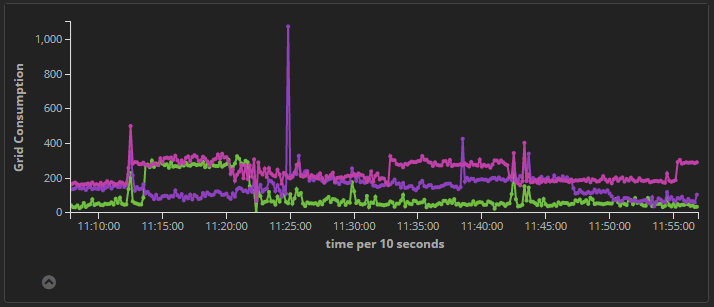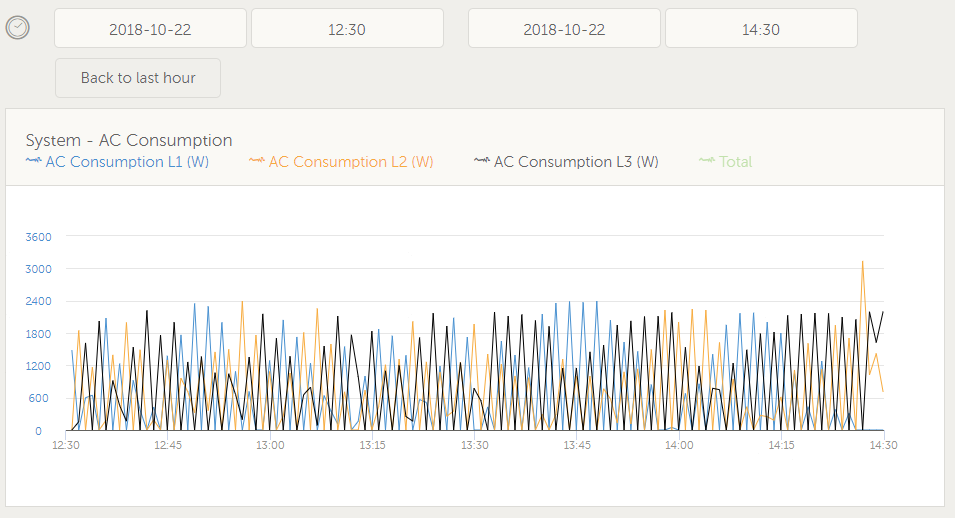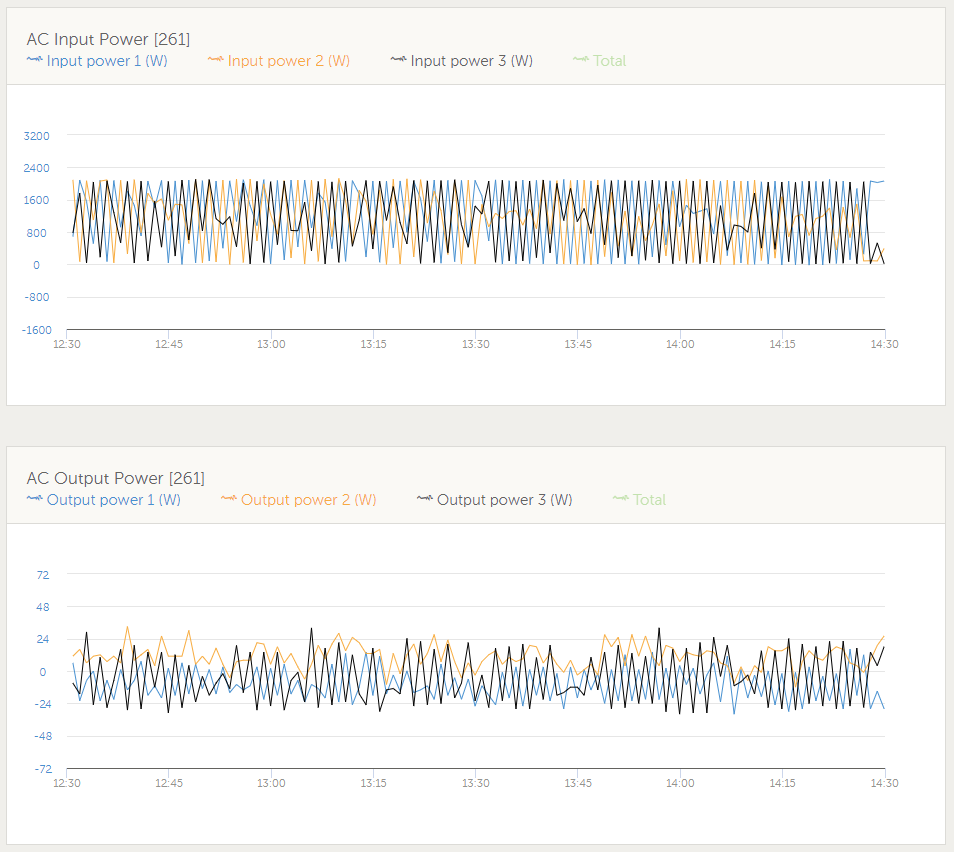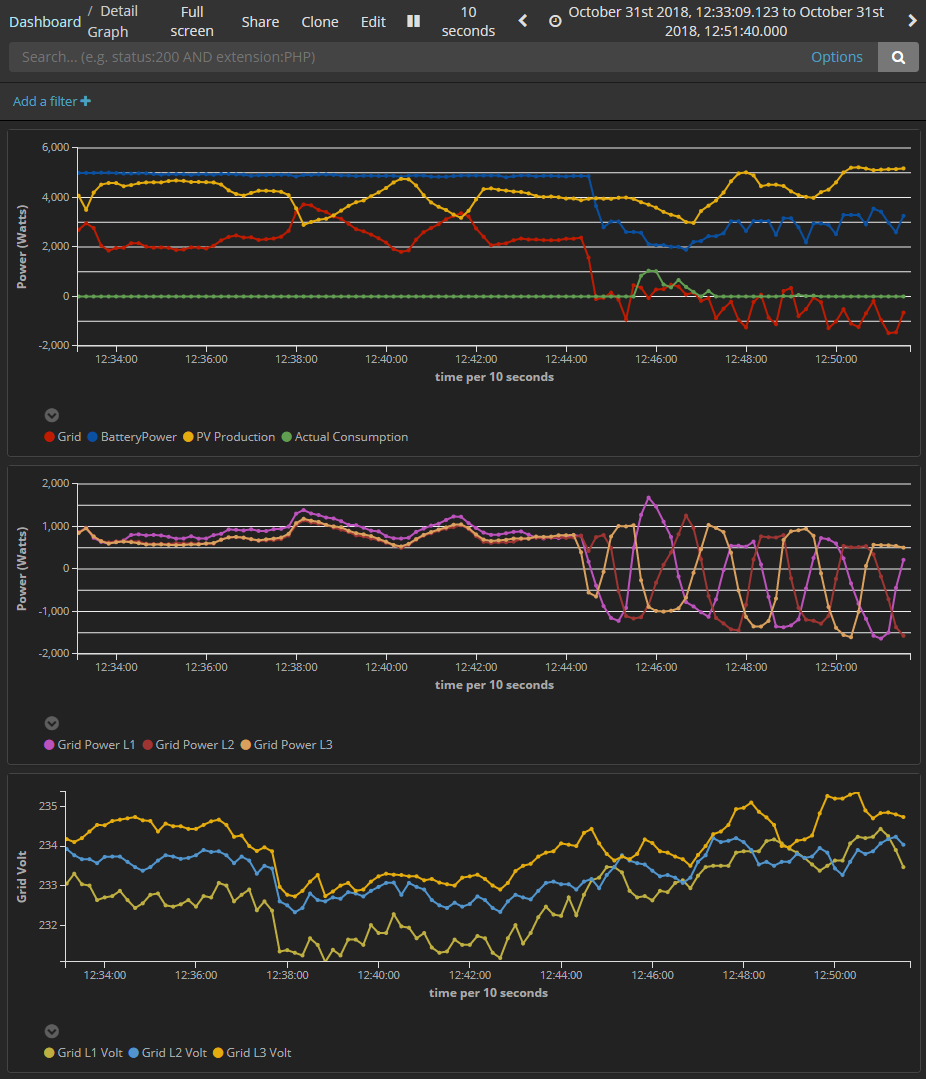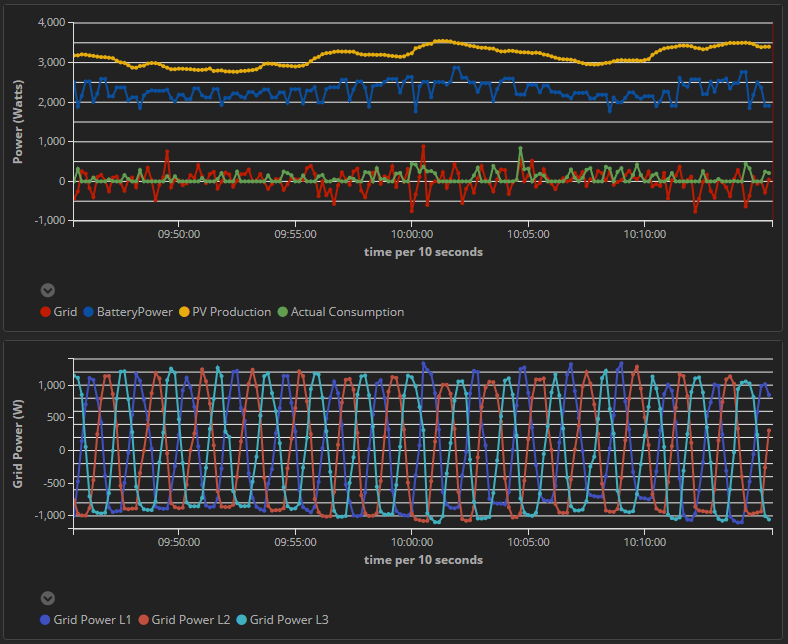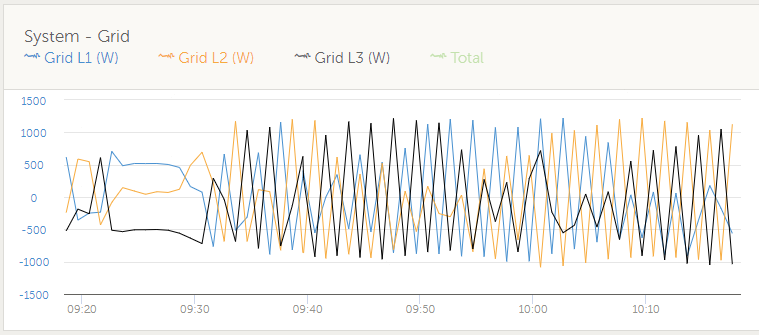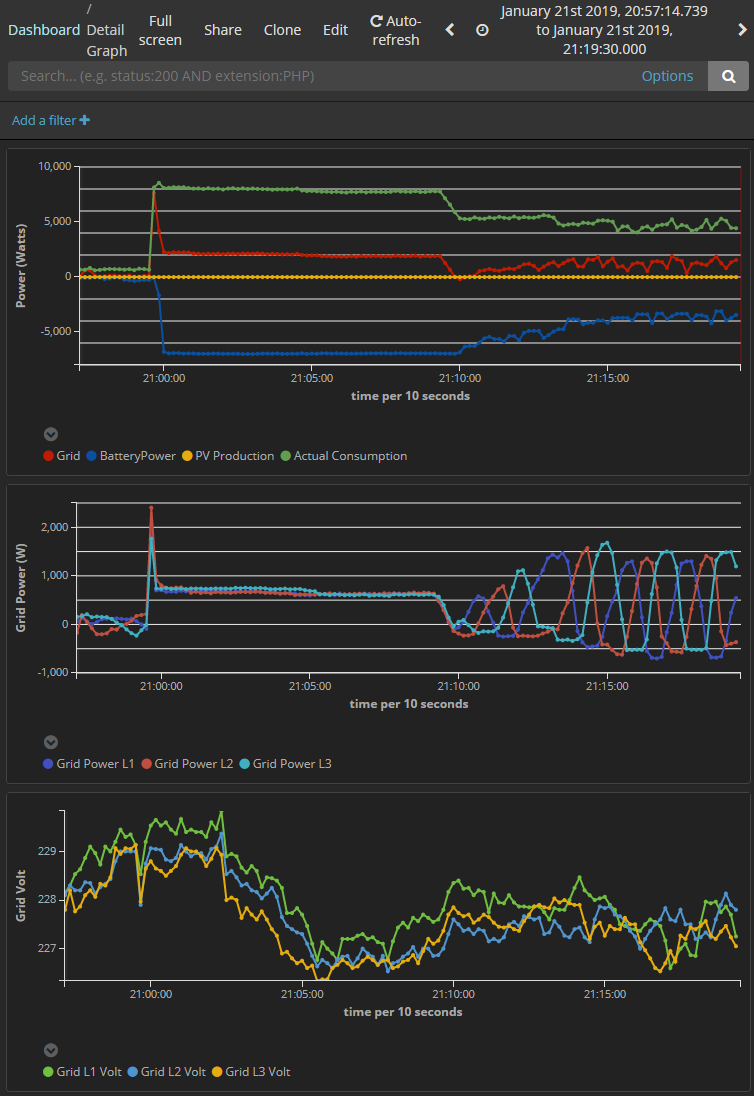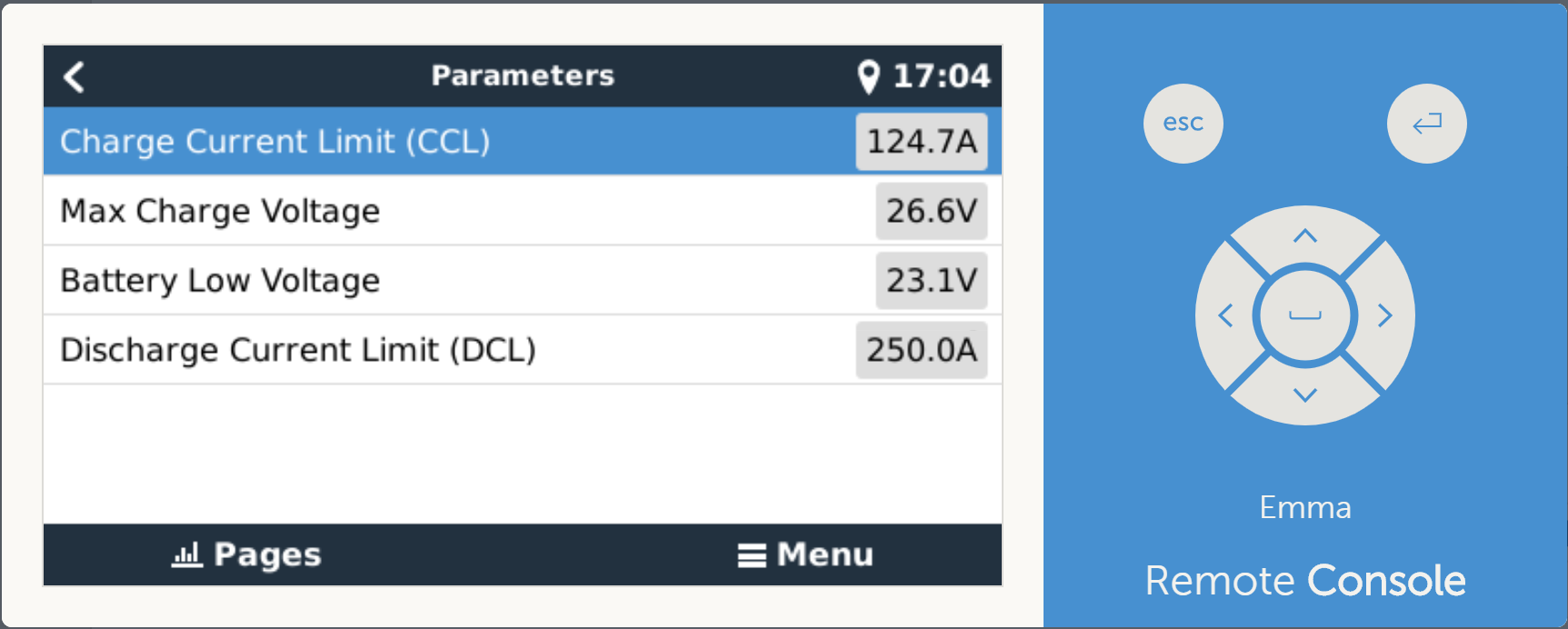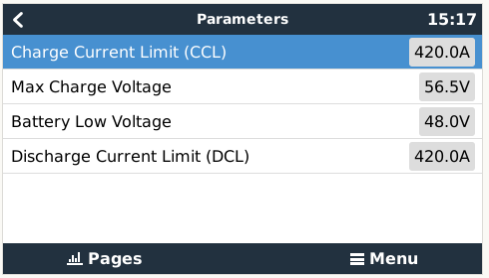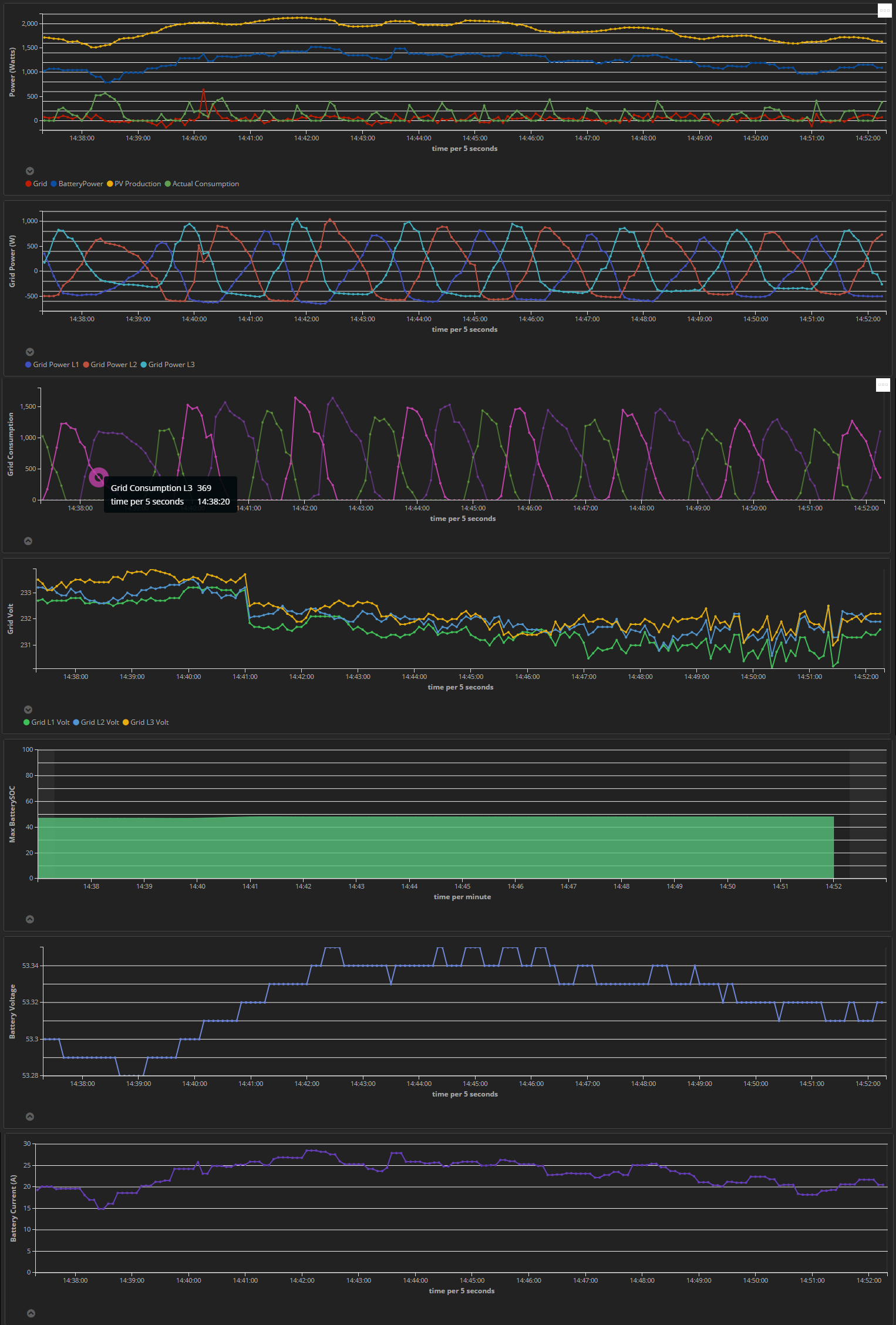Hi.
I have a 3-phase Multigrid 48/3000/35 system connected to three 10kWh BYD B-Box. Power is coming from a 7.8kWp SolarEdge inverter. I've had oscillation problems in the past which were fixed with a firmware update (thanks!), but I still have a problem with significant amounts of power from PV not being utilized. That power ends up getting dumped to the grid. Here's a graph that shows this, the data is pulled directly from the Venus D-Bus.
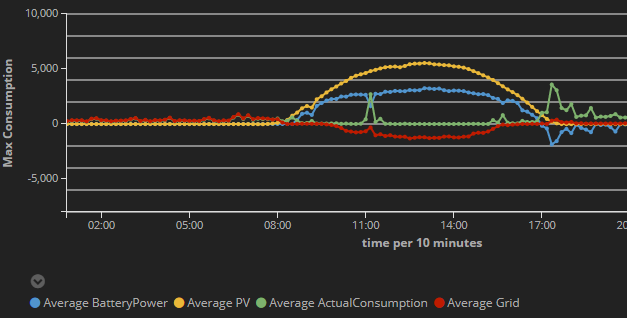
As you can see, the power delivered into the battery never goes above 4kW when there's barely any load from the house and plenty of PV power available. Excess power even gets fed back to the grid too. Here's a zoomed in view of the time around 14:00 which shows some detail:

The temperature in the room at the time was around 22C. For testing I've also done a complete charge of the battery from the grid to see what the maximum charge amp/wattage would be:
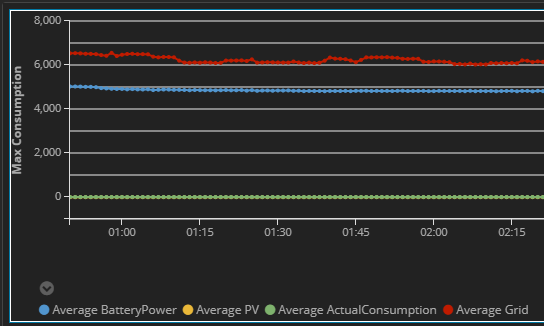
As you can see this goes up to around 5kW when charging from the grid, so it's not like the battery charge power limit is the cause here. Is this normal? If so, why is there excess power delivered back to the grid when there's actually plenty of room for putting more amps into the battery?
I see a similar effect when discharging with an even 3-phase load as well, as long as the load is around 6.9kW the system draws power from the grid even when the battery should be able to support this entirely, and I see the same weird wobbly oscillations. Then when I bump this up to 9kW suddenly the power drawn from the battery increases to max while the grid use remains roughly the same, and the oscillations are gone.
Don't get me wrong, the oscillation issues I had last December were completely different and massively bigger in amplitude. However that was a single phase system and I've since upgraded to 3-phase.
I've been talking to my installer and he asked me to also continously monitor the Grid AC In voltages (which I am now doing) but I feel like there might be a simpler solution or config suggestion, so I was hoping you could suggest some things for us to check. I am on the latest firmware (2.20). I also tried disabling my monitoring in case that my requests were causing this, but nothing changed and I was able to measure the same behavior with clamp sensors.
Any suggestions would be greatly appreciated!


